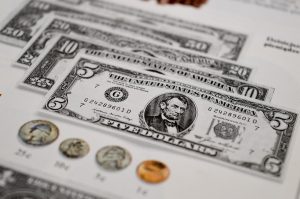The AUD/USD is a popular currency pair in the Forex market, also known as the “Aussie” and “Kiwi” respectively. The AUD/USD is widely traded due to its high liquidity and volatility, making it a popular choice among traders.
However, the AUD/USD does not exist in isolation, and its price movement is affected by a range of economic, political, and social factors. One of the most crucial factors that influence the AUD/USD is the correlation it has with other currency pairs.
Correlation is a statistical measure that indicates the degree to which two assets move in tandem. In Forex trading, correlation is used to identify pairs that move in the same direction, pairs that move in the opposite direction, and pairs that have no correlation at all.
In this article, we will discuss the currency pairs that are correlated with the AUD/USD and how traders can use this information to make more informed trading decisions.
The Australian Dollar (AUD) is a commodity currency that is heavily reliant on the country’s exports, particularly minerals, and agricultural products. Therefore, any significant changes in commodity prices can significantly impact the AUD/USD.
1. AUD/USD and NZD/USD
The AUD/USD and NZD/USD are two currency pairs that are highly correlated. The Australian and New Zealand economies are closely linked, and both countries export similar commodities, such as dairy, meat, and minerals.
Therefore, any significant changes in commodity prices can impact both currencies in the same way. For example, if the price of iron ore (one of Australia’s major exports) increases, it can lead to a rise in the AUD/USD and NZD/USD.
2. AUD/USD and USD/CAD
The AUD/USD and USD/CAD are two currency pairs that are negatively correlated. The Canadian Dollar (CAD) is also a commodity currency that is heavily reliant on the country’s exports, particularly oil.
Therefore, any significant changes in oil prices can impact the CAD and the AUD in different ways. For example, if the price of oil increases, it can lead to a rise in the CAD and a fall in the AUD/USD.
3. AUD/USD and USD/JPY
The AUD/USD and USD/JPY are two currency pairs that are negatively correlated. The Japanese Yen (JPY) is a safe-haven currency, which means that it tends to rise during times of market uncertainty.
Therefore, any significant changes in global risk sentiment can impact the JPY and the AUD in different ways. For example, if there is a global economic downturn or a geopolitical crisis, it can lead to a rise in the JPY and a fall in the AUD/USD.
4. AUD/USD and EUR/USD
The AUD/USD and EUR/USD are two currency pairs that are positively correlated. The Euro (EUR) is the second most-traded currency in the Forex market, and any significant changes in the Eurozone’s economic performance can impact the EUR and the AUD in the same way.
For example, if the European Central Bank (ECB) announces a stimulus package to boost the Eurozone’s economy, it can lead to a rise in the EUR/USD and the AUD/USD.
Conclusion
In conclusion, the AUD/USD is a popular currency pair in the Forex market that is affected by a range of economic, political, and social factors. The correlation it has with other currency pairs is an essential factor that traders need to consider when making trading decisions.
The AUD/USD is highly correlated with the NZD/USD and negatively correlated with the USD/CAD and USD/JPY. The AUD/USD is also positively correlated with the EUR/USD.
By understanding the correlation between currency pairs, traders can make more informed trading decisions, manage their risk effectively and potentially increase their profits.





